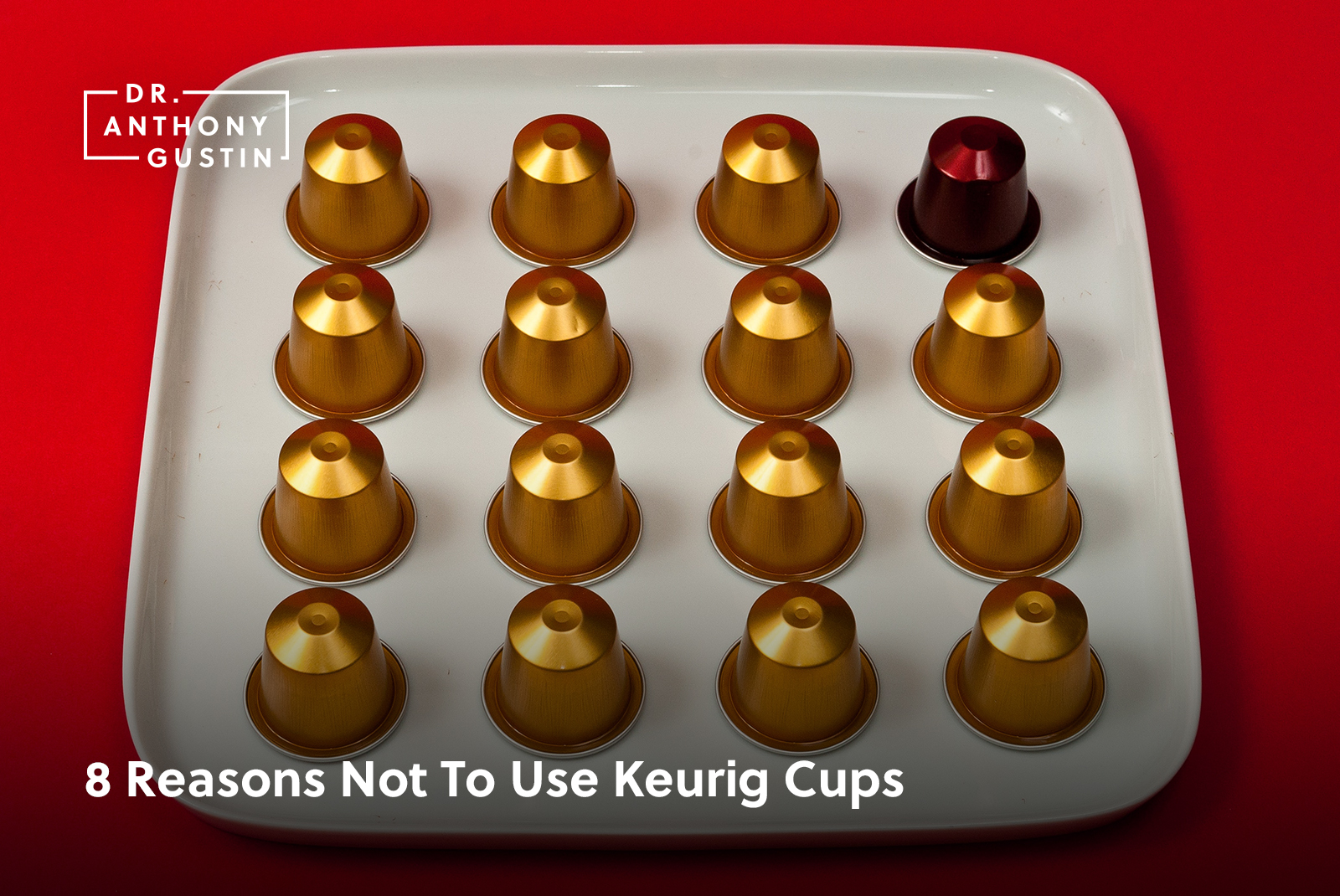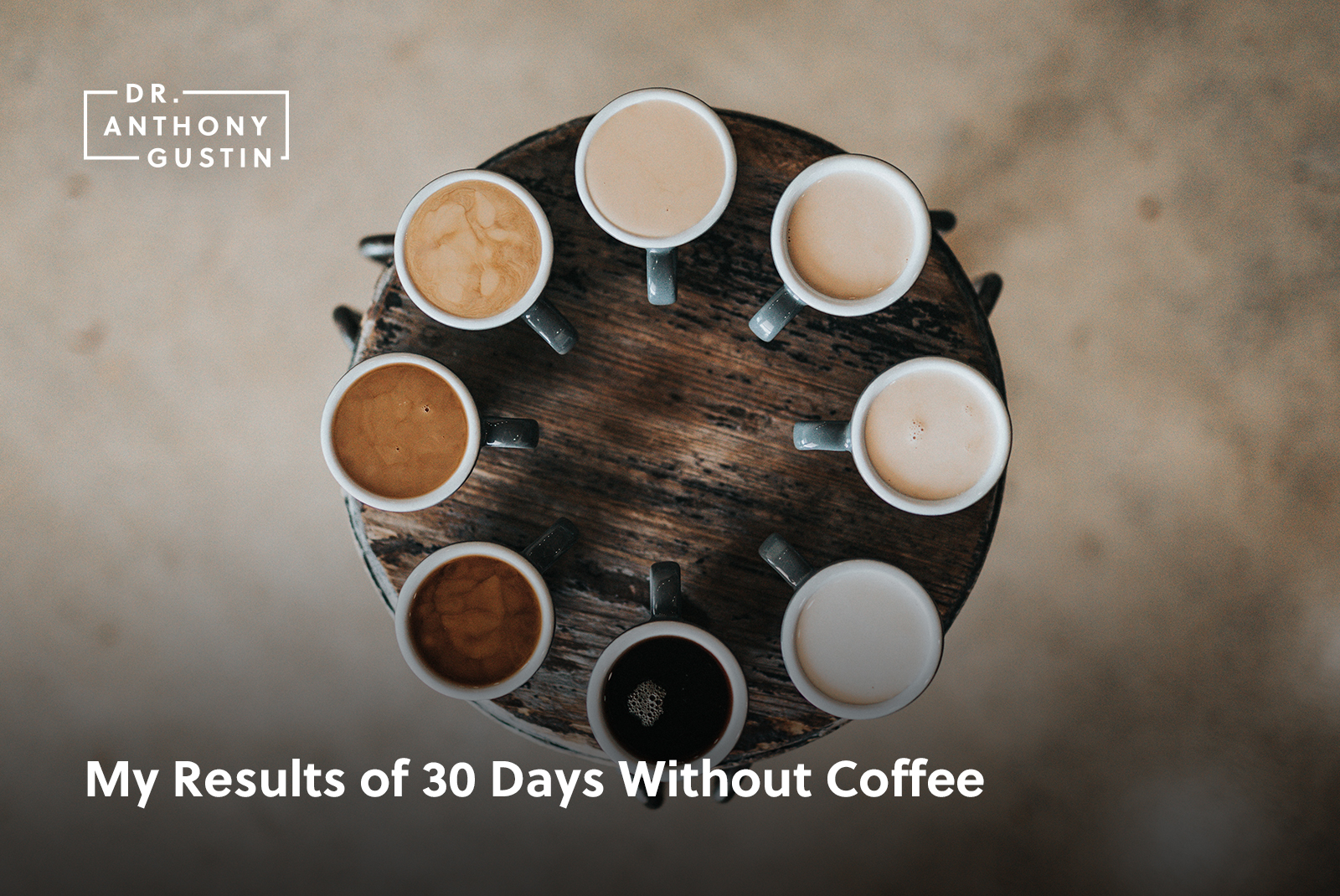8 Reasons Not To Use Keurig Cups

13% of the US population use Keurig cups or other single cup coffee EACH DAY. It was equally baffling to me the prevalence of single cup coffee use when traveling throughout Europe recently. Every hotel lobby, room and a good portion of restaurants were fully stocked with single cup machines.
Old stale (usually flavored) coffee that is shot through tiny little plastic cups? Still don’t get it. Plus, it only makes one cup at a time. Who only wants one cup of coffee at a time? Setting aside my need for copious amounts of coffee, there are definitely more important issues with Keurig machines that you should be paying attention to, concerning your health, your wallet and the environment. Here are 8 reasons not to use Keurig cups.
#1 – Sourcing Standards
Do you remember my article about sourcing coffee? If you don’t, go and read it now. Bottom line – coffee can be beneficial for your health when sourced properly, but it is damaging when not. As is the case with most food items. The source of Keurig cups and other single cup coffee machines are questionable at best.
In addition to generally having very low quality standards, excessively mass produced coffee in these single cup coffee pods is destructive for the countries it comes from. Coffee production on this scale usually takes over smaller family farms and leverages them to produce more coffee for less pay and poor working conditions. There could be books of information regarding coffee farm ethics, but simply put – coffee production on this scale is typically more destructive than beneficial for the farms that produce it.
#2 – Too many additives
I’ve noticed that most of the single use coffee cups, or “pods”, are flavored. Where do you think that flavor comes from? Undeniably some questionable ingredients. Here is just one sample of many things I would never want to put into my body.
The ingredient list contains:
Sugar, Creamer (Hydrogenated Coconut Oil, Glucose Syrup, Sodium Caseinate (from Milk), Sodium Polyphosphate, Dipotassium Phosphate, Sodium Stearoyl-2-Lactylate, Silicon Dioxide), Nonfat Dry Milk, Instant Tea, Natural and Artificial Flavors, Modified Food Starch, Salt, Sucralose.
If you don’t see a problem with any of those ingredients, you need to start back at square one. I would not say there is one thing in that entire paragraph of an ingredient list that I would recommend for human consumption – especially 13% of the population, on a daily basis.
#3 – The containers
Nothing reminds me of waking up on Sunday mornings like the smell of stale coffee having being plast through chemical laden cups. Although there are options to use Keurig cups that can be recycled, the vast majority of cups being sold are still of the plastic variant. What is alarming is that Keurig claims the composition of these cups are #7 plastic, which is an “unknown” proprietary composition.
Sure, some of the containers are “BPA free” but that is like saying grains that are “gluten free” are also healthy for you. Not the case. There are still many other problematic chemicals in plastics and glues that are leached out with heat and are very damaging to your health and hormones. No one’s body was designed to processed foreign chemicals. This daily chemical soup should be a huge no no to pregnant women, those breast feeding or anyone with hormonal imbalances.
#4 – Environmental Concerns
So if 13% of the US population is using single cup coffee per day, how many cups per year is that? Unfortunately, a lot. There were over 8.3 billion officially endorsed “K-Cup” brand cups (there are additional knock off brands) that were sold in 2013 alone. Just in one year that is enough to wrap around the equator 10.5 times. Keep in mind, there are still plenty of other single cup coffee makers that have the same exact problem.
The bad news is all of that plastic isn’t going anywhere. 95% of the plastic used in creation of these billions of cups per year is made from the same #7 plastic we talked about earlier, which is NOT recyclable. Even the 5% of cups that are recyclable, the mix of aluminum, plastic, coffee grounds and filtering system mixed with the fact that they are so small, leave them not getting recycled anyway. How many people do you know who use Keurig cups that dismantle them after each use and separate into their respective “trash” and “recycling” bins?
#5 – Expense
Relatively, the use of Keurig cups are alarmingly expensive. New York Times did an excellent piece on breaking down the cost of Keurig coffee in relation to other “coffee snob” type of brands. The result? Keurig cups and the coffee they contain typically come out to over $50/lb. $50/lb for old stale Folgers brand coffee that is in a tiny plastic cup?
The highest end craft coffee found at Blue Bottle, Stumptown, Kahvelogy, Sightglass, Ritual and other local SF roasters don’t even come close to that mark at around $24-32/lb. Less than half of the price for much, much better quality coffee seems like a no brainer to me.
#6 – The coffee isn’t fresh
Not only is the daily use of Keurig cups more expensive, the quality leaves much to be desired. Coffee is best kept in whole bean form, then ground and brewed roughly 48-72 hours after roasting. Of course this is a best case scenario, but the worst case scenario? Old stale coffee ground in plastic cups. This is the same thing as a jug of Folgers, except it costs much more per cup of coffee. If I’m spending any money on drinking something other than water, it better be damn good.
#7 – Brewing Standards
If you go to any high quality coffee shop, you will be getting roughly 19-21 grams of ground coffee per cup. This is roughly the same for espresso, french press, or pour over. How much does Keurig put in their cups? Roughly 5-8 grams. The rest, as we’ve highlighted above, is a bunch of foreign substances your body isn’t meant to process.
The standard temperature for which the Specialty Coffee Association of America’s (SCAA) Golden Cup Award is brewed 200 degrees F. Keurig machines only get to 192 F. Ask any coffee purists and they will tell you a few degrees makes a world of difference. 192 F is not hot enough to extract enough out of the grounds.
The combination of not hot enough water, the low amount of actual coffee, and the low quality of coffee means that you’re getting a really weak and awful tasting brew.
#8 – Convenience
Even if you are too lazy to traditionally prepare coffee, you shouldn’t use “convenience” as an excuse to have chemical filled, hydrogenated coffee shot through estrogenic chemical filled plastic cups that you can’t recycle. This is the same excuse that gets people into trouble with their food choices.
I timed how long it took me pull two shots of espresso this morning – under a minute. And how long to pour a cup of cold brew yesterday? 20 seconds to prepare the night before and about seven seconds to pour. I know, I know, I had to painstakingly reach to my freezer and grab ice for my cup. I had to use my hand to lift and pour the coffee myself. In either case, making coffee any other way isn’t really any less convenient. I’m also saving money. I’m supporting smaller local roasters who support the farms they purchase from. I’m getting high quality brew and NOT destroying my health and hormones in the process. It seems like even if it were less convenient to use the traditional methods, the benefits would outweigh the costs.
How about you? Do you currently use Keurig cups? Do you know someone who does? Has this article made you think twice? SHARE with someone you know does who does use Keurig cups and leave any questions or comments below if you have any!
UPDATE:
I have received many reports from different people that they use refillable pods and insert their own freshly ground coffee into them. This sounds like a great solution! If you are doing this and enjoy it, please continue. If you are in love with the Keurig machine or other machines because what they offer, also continue using it. These are my top reasons why I dislike single use coffee, but I also really enjoy coffee. Weigh out what is most important to you and run with that.




